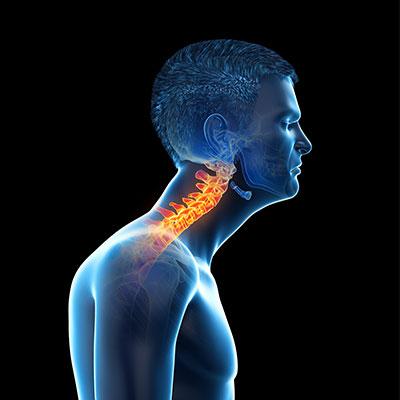Forward Head Posture is Worse than Once Believed

A new report by a nonprofit company that promotes safe technology and media for children determined that teens spend an average of seven hours and 22 minutes on their phones per day. Children ages 8 to 12 follow close behind at four hours and 44 minutes each day. Independent research found that 86% of U.S. workers spend their workdays seated. The economy and technology continue to evolve and improve aspects of a transformed world while also relegating many professionals to largely sedentary positions behind computers, phones, and screens.
One of the most significant health challenges existing today involves the spine, posture, and nervous system. A condition largely related to increased sitting on the job and technology use involves forward head posture. Forward head posture represents one of the most common causes of many symptoms and conditions suffered by children and adults. Neck pain, headaches, migraines, muscle stress, shoulder pain, TMJ pain, and back complaints serve as a few of the many challenges traced back to forward head syndrome.
Various research links forward head posture to symptoms and conditions related to problems within the autonomic nervous system. Health concerns within the nervous system manifest as problems with immunity, breathing, digestion, fertility, hormone control, and heart function. The science shows that forward head posture negatively influences the central nervous system, explaining why autonomic organ problems follow suit.
One of the biggest effects of forward head posture arrives in the form of head and neck pain. The overall prevalence of neck pain in the population reaches as high as 86 percent. Neck pain represents a common complaint in a society attached to electronic devices. Head and neck pain make a considerable impact on individuals and their families, communities, and businesses. Neck pain achieves recognition as the most persistent musculoskeletal pain syndrome. Increased time spent texting and using computers produce detrimental long-term impacts on neck bones and muscles traced back to prolonged periods of unhealthy neck flexion.
The neck functions as a resting place for the skull, so the skull stays atop the apex of the spine. An exponential amount of stress becomes absorbed by the neck when the head moves or rests in a forward position. Neck flexion adds substantial amount (pounds) of pressure onto the spine. The extra load becomes absorbed by spinal ligaments, tendons, and muscles. Regular periods of time spent in forward head flexion causes progressive and permanent changes in head posture. New research from December of 2019 showed that adults with neck pain usually go through their day with significantly more forward head posture than adults without symptoms. The study proved a significant correlation between forward head posture and neck pain intensity. Neck pain of this magnitude often leads to cases of disability – a tremendous fear when it comes to a young generation of children spending so much time staring downward.
Chiropractic provides a drug-free approach to improving pain and function by minimizing forward head posture. Regular Chiropractic care helps reduce the negative influence of technology on forward head posture. Taking proactive and preventative steps to minimize the negative effects of forward head posture represents one of the most beneficial health strategies available to every family member. Proactive nervous system care pursues a healthier tomorrow.


